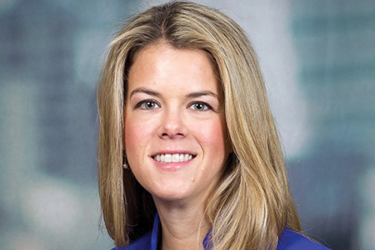Biopharma Finances: Bringing A New Drug To Market
By Kathryn McDonough, Co-Head of Healthcare for Middle Market Banking & Specialized Industries, J.P. Morgan Commercial Banking

Biopharma companies face a long journey with each drug they research, test, and — if all goes right — bring to market. And just as new drug development moves forward in phases, so too should your organization’s financial strategy.
American pharmaceutical companies spent more than $90 billion in R&D in 2020 according to the National Center for Science and Engineering Statistics’ Business Enterprise Research and Development Survey.
Here are some financial focus areas to consider as your biopharma business grows from early-stage concepts into mature, commercialized products.
Discovery, Development, And Research
Even at the earliest stage of laboratory research, founders need to be thinking about how to raise funds and who might be an investor or partner in the project. By developing an investment strategy from the start, your business will better know what to do with funds when they arrive at different stages of the process.
Throughout these introductory steps:
- Carefully assess your current cash position and accurately forecast your cash burn. The key at this stage is to stay flexible and focused.
- Think about a plan that could monetize your product within two or three years. What does a healthy capitalization table look like?
- Set up the proper operating accounts and merchant-processing services so that you can maintain liquidity.
Data according to the Congressional Budget Office:
12%The percentage of drugs that make it past the clinical stage to FDA approval. |
$1B to $2BThe average R&D cost per new drug, regardless of the success of the effort. |
Regulatory Approval
For the small share of drugs that ultimately obtain FDA approval (or pass equivalent safety regulations in other countries), commercialization can happen quickly. Financial priorities will shift from managing cash burn to managing revenue, handling payments and expanding the business. You may also need to start considering debt-financing options that can support your business as it scales, including traditional financing, venture debt, credit card, and equipment financing.
My colleague, Jason Gorak, relationship executive in J.P. Morgan’s Middle Market Banking & Specialized Industries business, notes flexibility here is key. “A positive set of clinical outcomes leading to FDA approval could propel a company to scale quickly into a commercial business. When this happens, they need a strong foundation in place.”
Commercialization
By this stage, an organization’s finances are more complex. After years of spending, you’ll need to collect payments, determine how employees will spend money when necessary, and find ways to access capital and credit.
Consider implementing tools that give you more visibility and control over your funds. Here are a few:
- Vendor management and payments solutions enable you to get paid and make payments quicker.
- Reporting and reconciliation tools simplify what are likely your increasingly complex financial statements.
- Cash management strategy can help ensure your capital is preserved and productive.
At this point you also should establish a formal governance structure. You may start with a finance director or a fractional CFO who supports a number of different companies. As the business grows, your finance team will grow with it. Leaders should play an active role in determining needed roles, which typically includes a CFO, a controller, and a person dedicated to financial planning and analysis (FPA).
Bringing a new drug to market is a costly endeavor. Understanding the unique financial needs at each stage of drug development can help focus your organization’s financial strategy — and get you to the next phase.
